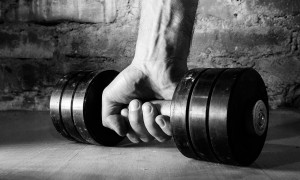Effective Ways Of Getting Stronger Without Getting Bigger

|
|
When people think about weight and resistance training, they immediately think of bodybuilders and individuals looking to bulk up and add as much muscle mass to their frames as possible. Whilst weight lifting is of course a very beneficial method of building muscle, not everybody who lifts weights is looking to build muscle and become bigger and heavier. With strongman competitions and powerlifting meets gaining popularity every single year, more and more individuals are now training in the gym to help increase their strength levels rather than their muscles. It doesn’t matter whether you’re following Olympic lifting routines, strongman, powerlifting, crossfit, or are simply trying to get stronger, there are a number of ways of getting stronger and increasing your strength without getting bigger and heavier. Here’s a look at a few ways how.
Train heavy

When lifting weights, studies have revealed that training heavy I.E around 90% of your 1 rep max, aiming for around 3 – 5 reps per set, is ideal for building strength as opposed to just size. Training in this manner recruits what are known as high-threshold motor units, and it is the muscle fibres associated with these motor units that have shown the most promise when it comes to increasing muscle strength. The problem is that they quickly fatigue, which is why training heavy is the preferred method of incorporating these fibres. Though dealing with a heavy weight, avoid techniques such as pause-pressing, or holding the weight on the negative part of the lift, as your intention should be to complete each rep as quickly as possible, as this will engage the most fast-twitch muscle fibres, which will help generate strength and power in the muscles.
Explosive lifts
We mentioned previously about how beneficial it is to lift the weight as quickly as possible as this is what will recruit the most fast-twitch muscle fibres, and explosive lifting is a sure-fire way of doing just that. Here however, rather than using loads of around 90% of your 1RM, instead you should use around a 60% of your 1RM, with the intention of moving the weight as quickly as possible. So, say you’re looking to increase your bench press, you’ll load the barbell up with the weight, will lower the bar down towards your chest as you would normally, and will then explode upwards, as if you’re trying to push the barbell through the ceiling above you. Olympic lifts are especially beneficial here, clean and jerks, cleans, snatches, etc.
Plyometrics
People often associate plyometrics with agility and speed but plyometric training is another very effective method of increasing your strength, without bulking up and adding too much muscle mass. Plyometric training will require individuals to do jumping and hopping-type exercises, developing a technique known as the stretch shortening cycle. This technique actually teaches the human body to use stored elastic energy reserves more efficiently, which in turn allows the muscles to produce more forceful and stronger contractions.
Reduce your volume

Many individuals looking to increase their strength levels will follow training programs such as a 5×5. This is basically 5 sets of 5 reps, and whilst beneficial, it is not necessarily the most effective method of increasing your strength. The problem with that is that that much volume has been found to stimulate muscle growth as well as muscle strengthening, which is not ideal if you’re trying to maintain your current size but increase your strength. In this instance, experts recommend dropping the volume down to 2-3 sets per exercise instead. By reducing your volume and following explosive lifting techniques, strength and explosive power levels will both benefit, without you bulking up and adding muscle mass in the process. You will also be training less frequently, so again, the most muscle fibres will be activated, without having to worry about bulking up.
Increase your rest periods
Bodybuilders and individuals looking to build muscle will generally aim for as little rest as possible, typically between 30 and 90 seconds between sets. When training purely for strength and power however, individuals should instead increase their resting periods to around 2 – 4 minutes between each set. The reason for this is that as they’re using far heavier loads than usual, in order for the muscles to fully recover for the next set, they will need adequate time to do so. This will not only give your muscles a chance to rest and recover, you will also be able to catch your breath before the next set, and your brain will also get chance to rest, which will help benefit you greatly as you develop a strong mind-muscle connection.
Focus on your weakest areas
If you’re good at something, naturally you’ll want to continue doing so in order to become even better. If you’re especially good at certain lifts, or if a certain body part is particularly strong, naturally you’ll want to train it even more. However, rather than focusing on what you’re good at, what you should be doing is instead focusing on areas that you’re not so good at. If your bench press is especially weak for example, rather than just going through the motions when benching, hoping to get the exercise out of the way as quickly as possible, what you should instead be doing, is focusing more of your time and energy on bench pressing so that you can improve upon your weaknesses. Remember, you can only be as strong as your own weakest link, so take the time to really work on areas you’re not so great at. It will be tough mentally, especially when you hit plateaus, but it must be done and once you do start making progress, the psychological boost you enjoy will have been worth it in itself.














